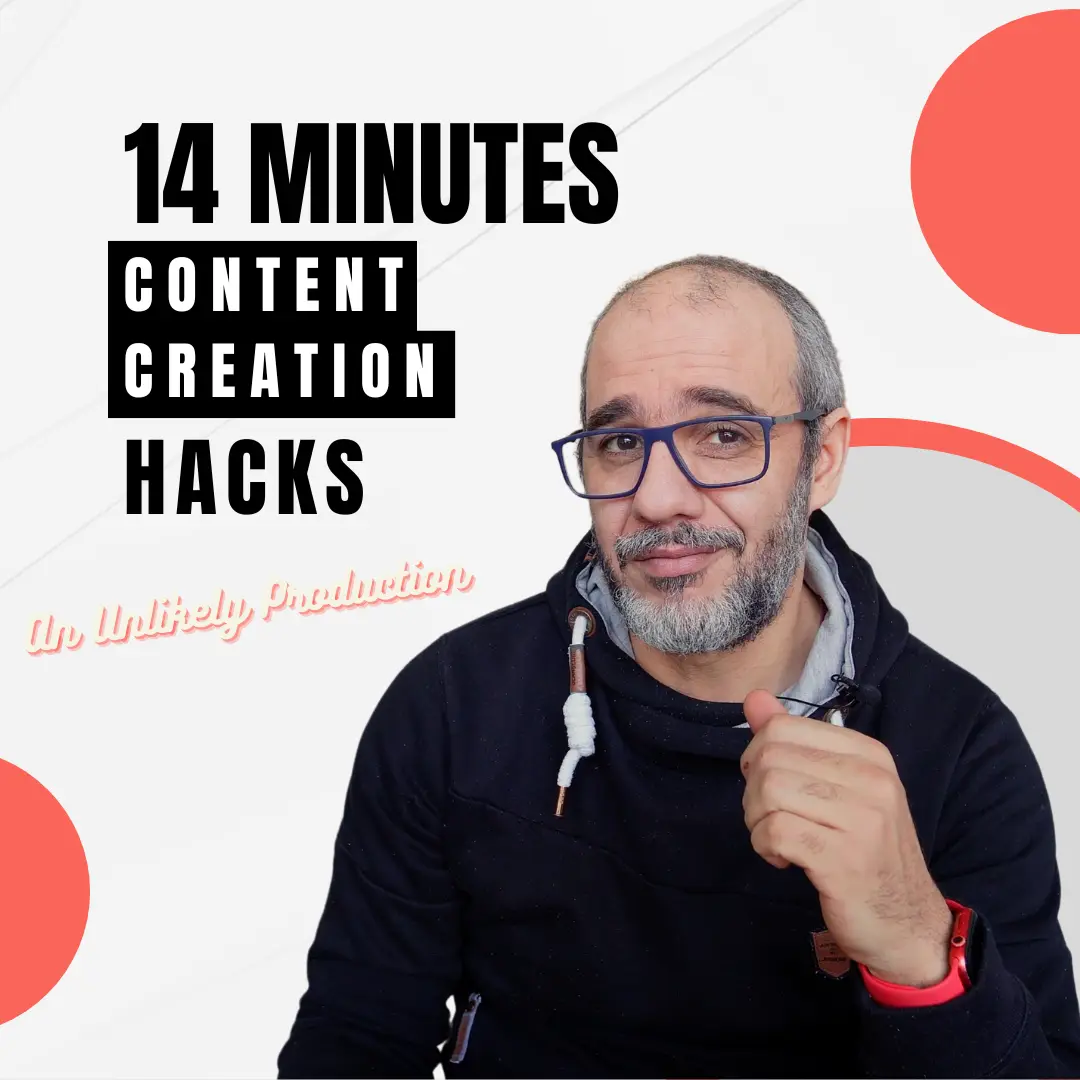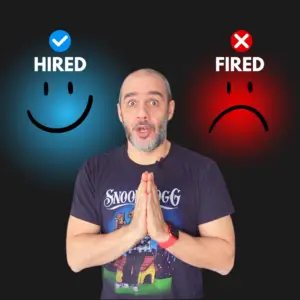Are you juggling a full-time job, a family, or a jam-packed schedule and still feeling the pressure to churn out fresh, consistent content? You’re not alone. Between daily errands, meetings, and all those Netflix episodes calling your name, finding time (and energy!) to create quality content can seem impossible. Good news: it doesn’t have to be.
Below, you’ll find the ultimate deep dive into time-saving content creation strategies. This article parallels our 30-minute YouTube video guide, offering step-by-step tips on everything from time management to batch creation, planning, automation, repurposing content, and more. Ready to supercharge your content game? Let’s get started.
- The Core Conflict: Busy Schedules vs. Content Demands
Why We’re Always Scrambling
There’s a constant tension many creators face: we know consistent posting is key to growing an online presence, yet our daily to-do lists are longer than a Shakespeare play. If you’ve ever skipped posting because life got in the way, this section is for you.
Your Problem:
• “I want to grow my brand but don’t have time to post regularly.”
• “I have so many ideas but struggle to put them into action.”
• “I either post sporadically or spam my feed with rushed content.”
Our Solution:
A mix of practical, battle-tested strategies that help you work smarter, not harder. Think of it as your content creation “life raft” in a sea of endless to-dos.
- Mastering Time Management
The Pomodoro Technique
Ever noticed how it’s easier to stay focused when you have a short, manageable deadline? That’s the magic of the Pomodoro Technique. Work in sprints—25 minutes of focused effort, followed by a 5-minute break. Repeat this cycle to efficiently tackle tasks like scripting, editing, or brainstorming.
• Try This: Use a timer or an app (e.g., Forest, Focus Keeper) to maintain that 25/5 split.
• Why It Works: Short bursts of work keep you energized and limit distractions.
Eisenhower’s Matrix
Not all tasks are created equal. This matrix helps you categorize tasks into four areas based on urgency and importance:
1. Urgent & Important: Do it now (e.g., a project deadline).
2. Important but Not Urgent: Schedule it (e.g., planning your editorial calendar).
3. Urgent but Not Important: Delegate it (e.g., answering non-critical emails).
4. Neither Urgent nor Important: Delete or defer (e.g., endless scrolling on social).
• Real-Life Example: Finalizing a YouTube script for tomorrow’s upload is urgent + important. Choosing new Instagram highlight icons—fun, but not exactly urgent.Quick Tip: Combine these methods for maximum impact—use Pomodoro sprints on the tasks you’ve identified as truly important.
- The Magic of Batch Creating
Why Batch Content?
Batching is like meal prep for your content. Instead of cooking every day, you cook once or twice a week in larger quantities. The same principle applies to filming, writing, or designing.
Perks of Batch Creating
1. Consistency: Keeps your quality and style uniform across multiple pieces of content.
2. Momentum: Once you get into a creative flow, it’s easier to keep going than to start fresh each time.
How to Batch Like a Pro
• Pick a ‘Content Day’: Reserve a few hours to film multiple videos or record several podcast episodes.
• Rotate Outfits: If you’re filming, switch up your clothes to make the videos look like they were shot on different days (we won’t tell if you don’t).
• Set Up Stations: If you’re taking photos for Instagram, set up different backgrounds or lighting scenarios in advance to speed up production.
Example A: Film 3 YouTube videos on Saturday afternoon. You’ll have your next three weeks of content lined up.
Example B: Spend one Sunday designing all your social media graphics for the month. A few hours of focus can save you daily stress.
- The Advantages of Planning Ahead
The Problems with “Wing It”
When you’re pressed for time, it’s tempting to just wing it. You might think, “I’ll post whatever comes to mind.” But this leads to inconsistent quality, missed opportunities for engagement, and overall brand confusion. Plus, it can be stressful when your mind goes blank at the worst times.
Crafting a Solid Content Calendar
Monthly Calendar
• Brainstorm: List 4-8 topics you’re excited about.
• Mark Special Dates: Product launches, industry events, or trending holidays.
• Assign Platforms: Decide which content belongs on YouTube, Instagram, TikTok, etc.
Quarterly Theme
• Break your next three months into themes (e.g., Month 1: Productivity, Month 2: Social Media Tips, Month 3: Creative Inspiration). This guides your content direction and prevents writer’s block.
Real-Life Example:
• If you’re a fitness coach, plan January around “New Year’s Resolutions,” February around “Heart Health,” and March around “Spring Fitness Challenges.” Each month, your audience knows what to expect, and you know exactly what to create.
- Tools That Do the Heavy Lifting (Time Management & Scheduling)
It’s not enough to plan in your head. Tools can automate and organize your workflow, freeing you up to focus on the fun stuff—creating great content.
Trello or Asana
• What They’re Good For: Project management, visual task boards, checklist tracking, and team collaboration.
• Implementation: Create columns like “Ideas,” “In Progress,” “Review,” “Scheduled,” and “Published.” Drag tasks along as they move through your pipeline.
Pro Tip: Color-code tasks based on urgency or content type. For instance, red for urgent videos, blue for social media posts, green for blog articles.
Buffer or Hootsuite
• Why Use Them: Schedule posts across multiple social media platforms at once.
• Key Benefit: You can load up a week (or month) of content in one sitting, then let the scheduler do its thing while you reclaim your nights and weekends.
Example A: Schedule a month’s worth of Instagram quotes, reels, and stories in a single afternoon.
Example B: Track engagement and analytics to refine what’s working and what isn’t.
- Repurposing Long Videos into Short Gems (Gary Vee-Style)
The Reverse Pyramid
Gary Vaynerchuk often talks about creating one large piece of content—like a keynote speech or a long-form video—and then slicing it into smaller “micro-content” for different platforms. This approach is a massive time-saver and a proven method to stay visible online.
Ways to Repurpose
1. 30-Minute YouTube → 60-Second Reels: Snag the best soundbites or highlights and transform them into reels or TikToks.
2. Transcriptions → Blog Posts: Turn your video or podcast transcript into a written article. Great for SEO and for audience members who prefer reading.
Example A: Hosting a 30-minute livestream? Save it, edit out the fluff, and upload shorter highlights to Instagram or LinkedIn.
Example B: Pull the best quotes from your talk, overlay them on an image, and post on Twitter or Pinterest.
- Using ChatGPT (or Other LLMs) to Speed Up Your Workflow
AI writing tools can be a busy creator’s secret weapon. Need a quick outline for your next vlog or a batch of Instagram captions? ChatGPT has your back.
How to Leverage AI
• Idea Brainstorming: Prompt ChatGPT with “Generate 10 content ideas around personal finance.”
• Drafts & Captions: Ask for a short blog intro or 5 catchy tweets about your niche.
• Editing & Revision: Paste your draft into ChatGPT to check grammar or suggest rephrasings.
Example A: You’re stuck on a YouTube title? “Give me 10 compelling titles for a video on productivity tips.”
Example B: Need a social media hook? “Write a short, engaging Instagram caption about batch creating content.”
Remember: Inject your personality. AI can give you a framework, but your unique voice is what truly resonates with your audience.
- CapCut Pro: Simple Yet Powerful Video Editing
Why CapCut Pro?
Editing can be daunting, especially if you’re not a trained videographer. CapCut Pro simplifies the process, offering automated captions, sleek transitions, and user-friendly timelines—all on your smartphone or tablet.
Top Features
• Auto-Captions: Perfect for viewers who watch on mute.
• Transitions & Effects: Give your clips a polished, cinematic feel in minutes.
• Social Media Templates: Customize vertical or square formats for quick uploads.
Example A: Film a behind-the-scenes look at your day, import into CapCut, and auto-generate captions. Quick, accessible, and easy to share.
Example B: Repurpose a webinar into short highlight clips—add text overlays and brand colors for a cohesive feel.
- Podcasting: The Easiest Route to Long-Form Content
Not comfortable being on-camera for half an hour? Podcasting might be your new best friend. All you need is decent audio and a topic you’re passionate about.
Why Start a Podcast?
• Low Tech Barrier: You can record on your phone or a basic mic.
• Less Pressure: No need to fix your hair, outfit, or lighting.
• Deep Conversations: Great for interviews, Q&As, and storytelling segments that truly resonate with your audience.
Example A: Launch a weekly 20-minute show discussing trends in your industry.
Example B: Invite a guest or industry expert—chances are they’ll share the episode, helping you tap into a broader audience.
- Putting It All Together (And Why It Matters)
If you’re feeling overwhelmed by all these tips, take a deep breath. Start with one or two strategies—maybe batch creating and a simple content calendar—and gradually add more as you gain confidence. The real key here is consistency: it’s better to post smaller, high-quality pieces regularly than sporadic, rushed content that leaves your audience guessing.
The Grand Takeaway
We began with the conflict—being too busy to create consistent content—and introduced time-tested solutions. The end goal is for you to stop feeling like you’re sprinting on a hamster wheel and start feeling like the calm, collected creator you’ve always wanted to be. Each hack, tool, or approach is a stepping stone toward a smoother, more enjoyable content creation process.
Your Next Steps
1. Comment Below: Share which tip you’re most excited to implement—batch creating, AI writing, or scheduling tools?
2. Try One Hack: Test a Pomodoro sprint today or draft your content calendar for next week.
3. Join the Community: If you’re looking for more resources or peer feedback, check out our free creator group (link in the video description or at the end of this article).
Remember, content creation doesn’t have to be a chaotic time-suck. With the right systems and a bit of planning, you can show up consistently, grow your brand, and still have time for that Netflix session. Cheers to creating without the burnout!
Ready to Level Up?
Implement these hacks and watch your content game soar. Don’t forget to check out our accompanying 30-minute video for a deeper, more visual dive into each topic. Your busy schedule just got a whole lot more manageable—happy creating!




